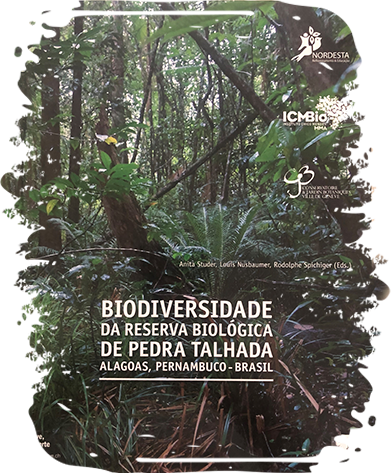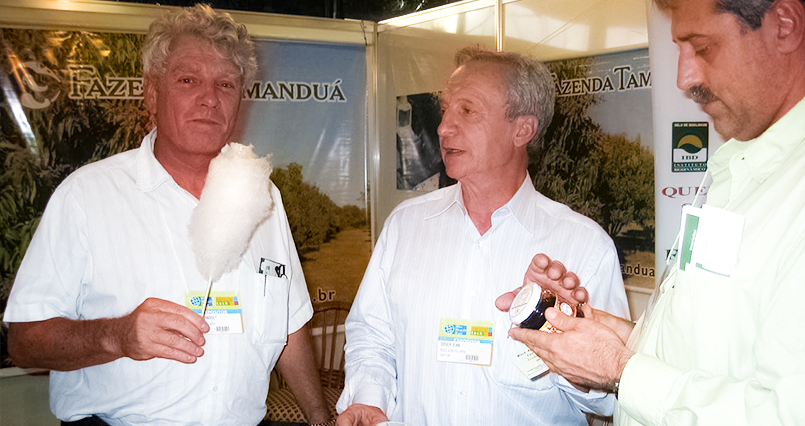Partnerships and Agreements
With its 3,000 hectares in the high sertão of Paraíba, its dams and undulating topography covered with native vegetation (the caatinga), with hills and typical stone outcrops, its PNHR with more than 300 hectares that joins the Legal Reserve areas, which receive total fauna and flora protection since 1977, and the fact that it has been farmed under the biodynamic system since 2000, the Tamanduá Farm has become an unique area to develop partnerships and agreements in the field of environmental preservation and sustainable agriculture in the semi- arid.
This is how we entered into the following partnerships and agreements:

Como a RPPN da Fazenda Tamanduá contribui com a biodiversidade da Caatinga?
Dr. Pierre Landolt conversa com os Biólogos Paulo de Barros e Thais Lira sobre a importância da RPPN, Reserva Particular do Patrimônio Natural, para os estudos do bioma da Caatinga, e a contribuição na manutenção da vida de mais de 300 espécies catalogadas por lá e que resultaram no livro Fauna Ilustrada da Caatinga.

NORDESTA Reflorestatiton et Éducation
A recent and very original partnership was established between the Tamanduá Farm Institute and NORDESTA Reforestation et Éducation. A Swiss NGO founded in 1985, based in Geneva, its action is located in the Pedra Talhada Biological Reserve, covering an area of 50km2 located in Brazil between the states of Alagoas and Pernambuco. Covering a biome formed mainly by the Atlantic Forest, its founder, Anita Studer, a biologist, decided to undertake a titanic and highly commendable job in this region. This includes reforestation, which prevents erosion in addition to allowing the recovery of drainage basins that suffered from excessive deforestation, in addition to creating jobs in native tree nurseries. Another aspect is the raising of honeybees, native bees, but also of conventional beekeeping, guaranteeing the pollination of the reserve and the income of the residents in the surroundings.
The preservation of fauna and flora, in an area of very rich biodiversity, involves special projects, such as the endangered hyacinth macaw. Environmental education makes the residents and young people in the region aware of the need to preserve their environment to ensure a better and healthier life. Finally, to support her work in the field, Anita managed to produce and edit an exceptional book called “Biodiversidade da Reserva Biológica de Pedra Talhada, Alagoas, Pernambuco-Brasil," summing up the fauna and flora of the Reserve. Many of these actions are carried out by the Tamanduá Farm Institute, but in a different and complementary biome, that of the caatinga in the semi-arid in the Northeast, and a collaboration seemed obvious. Anita and Pierre met and a win-win partnership was quickly established. In addition to an ample and permanent work of exchange of knowledge and experiences between the two entities, one of the first collaborative works was the reconstruction of the riparian forest in the sertão, which was destroyed mainly after the end of the cycle of the oiticica, Licania tomentosa. In fact, its fruit was harvested and transformed in oil used for various purposes, such as making soap, homemade medicine and replacement of synthetic oils in paintings, representing an interesting source of income. Unfortunately, due to the Covid pandemic, the work is on stand-by, as well as the planned exchanges.

Interview: Arthur Navarro – IBAMA Superintendent
IBAMA
The IBAMA Superintendence in Paraíba has always followed up with the work of preserving fauna done at the Tamanduá Farm. They decided to sign an agreement authorizing and defining the construction of a large nursery aiming at the readaptation of birds apprehended to their environment before their release, as well as the use of the Farm to release mammals rescued from trafficking.
Superintendent Dr. Arthur Martins Marques Navarro personally paid tribute to this work by releasing birds, tortoises, and several mammals at the Farm. The inventory available in the book Fauna Ilustrada da Fazenda Tamanduá ensures the existence of these animals in the farm environment.

Interview: Capitã Thais Vilar - 3º Batalhão de Polícia Ambiental (PB)
MILITARY ENVIRONMENTAL POLICE
A Polícia Militar Ambiental de Patos desenvolve também um belo trabalho com a Fazenda e trazendo todos os animais apreendidos e soltos em seguida no seu ambiente. Já vieram veados, tamanduás, jabutis que voltaram felizes a natureza. Com o seu batalhão, a Tenente Thais não para este trabalho tão importante de orientação do público e apreensão dos animais.

Interview: Theonys Diógenes - Coordinator of the Veterinary Medicine course at UNIFIP
UNIFIP
The biodynamic livestock system developed at the Tamanduá Farm, with Swiss Brown dairy cattle, goat farming with mixed Boer and Alpine breeds, and sheep farming with Santa Inês and Dorper breeds, works very well, giving value to the products as helping the environment. The perfect adaptation of the Farm staff to the strict federal rules of MAPA and the Botucatu Biodynamic Institute ensure the quality of organic and biodynamic products.
Encouraged by the world view of the Coordinator of its Veterinary Course, Theonys Diógenes Freitas, UNIFIP (Patos University Center (PB)) decided to sign an Agreement with the Tamanduá Farm, located just 20 km from the city of Patos, to be a pioneer in teaching students the secrets of organic animal farming, with classes, courses and internships at the Farm.
The Farm may benefit from the support of UNIFIP professors and laboratories, with the possibility of developing specific research. In addition, some scholarships will be awarded to Farm employees.
UNIFESP
The Tamanduá Farm established a research partnership in the health sciences, through Dr. Anna Rafaela Cavalcante Braga, a professor who acts in the areas of Food Sciences, Bioproducts and Bioprocesses at UNIFESP (Federal University of São Paulo).
The Cooperation will focus on studies of bioactive compounds present in the biomass from spirulina as well as from other biodynamic products from the Tamanduá Farm, such as honey, propolis extract, milk derivatives, fruits and derivatives, colorful rice, collaborating for the development of bachelor, master’s and doctoral research studies. Thus, we bring value to our products through research.
EMBRAPA Meio Norte
Dr. José de Almeida Pereira, a specialist in colorful rice, has developed an exceptional work initially on red rice, also called “arroz da terra” or “arroz de Veneza,” which was the first variety of rice introduced in Brazil, in the 17th century, by the Portuguese. The cultivation of this historic rice was maintained over time, mainly in the countryside of the Northeast, in “rice lowlands,” in which water pools during the short rainy season, allowing a production cycle to be completed. Almeida decided to study the different varieties spread across the Northeast and make improvements to make the rice more precocious, productive and colorful.
Em 2011 a Fazenda Tamanduá participou de um trabalho de pesquisa de cerca de 40 variedades diferentes de arroz vermelho com manejo orgânico que resultou na ressurreição desta variedade original e esquecida.
With EMBRAPA, we are now resuming work with black rice, originally from India, a variety that we farmed with organic management and sold successfully. A new page of learning and exchanges of experience begins.


